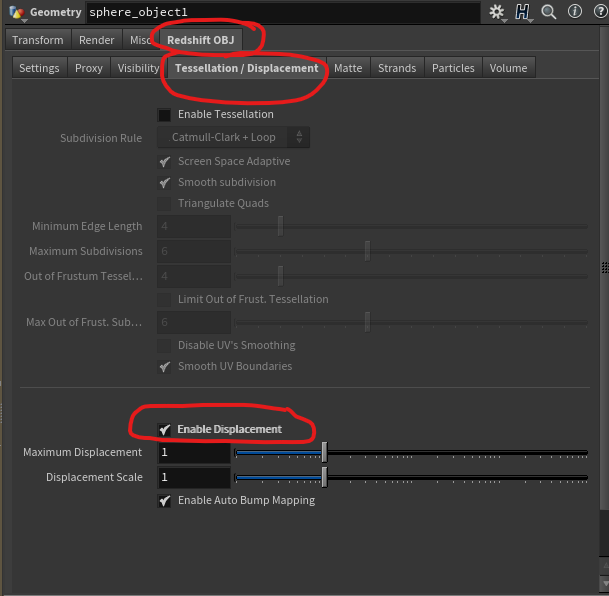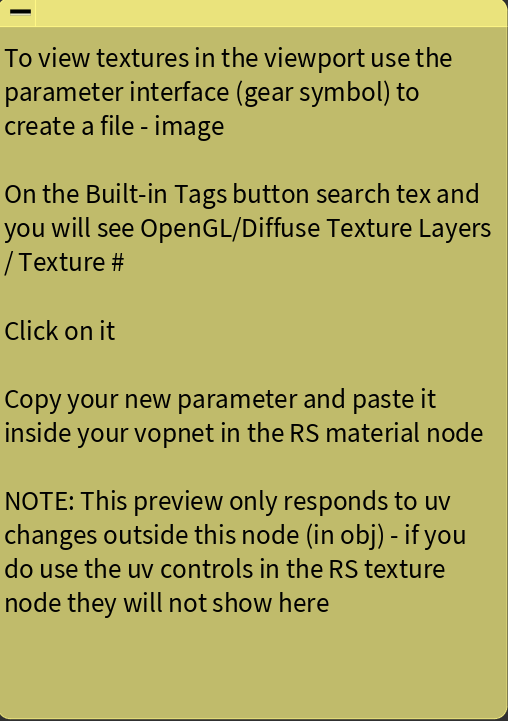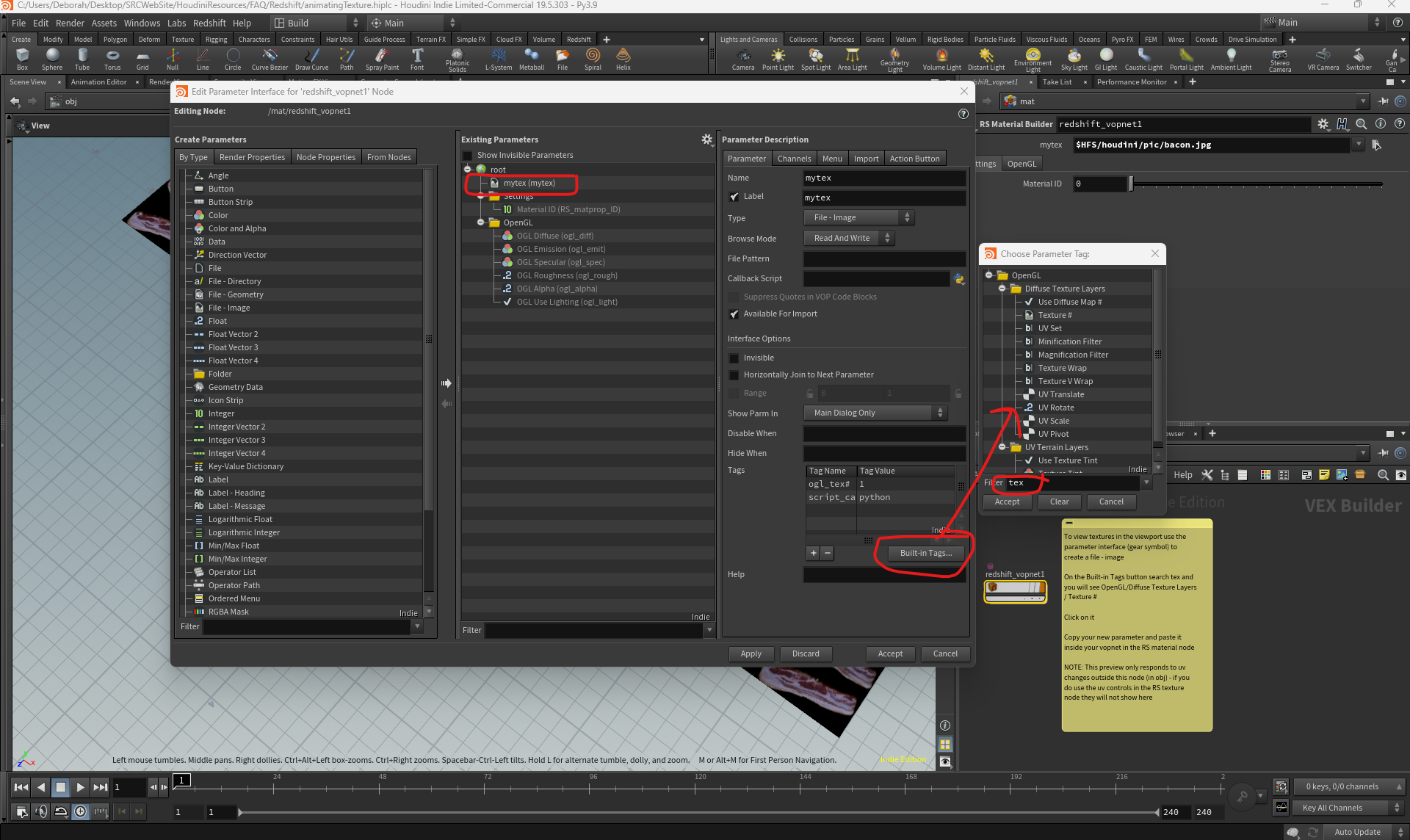Deborah R. Fowler
Houdini and Redshift Materials
Posted Dec 5 2021
Mar 7 2024
You will need to use Redshift shaders (in the mat context - type
tab redshift for a rs material builder, dive inside. Note
that in 19.0.383 the default was an RS Material with pre-selects
available. The default in 19.5.303 is the Standard surface, but
you can create an RS Material instead by using tab and plugging it
into the output.
HINT:
Previewing a texture in Redshift animatingTexture.hiplc
If you want to see textures in your viewport you can with a few easy steps. Note this preview will only show uv changes at sop level, not on the rstexture node, but still can be useful. Instructions are given in the above file:
HINT:
displacement in redshift has to be enabled on the object
in order for the shader to work

HINT: displacement in
redshift can cause issues with boolean when merging objects in the
same container - example coming soon (ran across this recently
Sept 7, 2022, turns out I used a bump but will document)
HINT: If using Maxon
Noise,
- if your object is moving through the texture you will need to use a rest node. If that fails you can also opt for space "uv" rather than space "object"
- From the documentation:
- UV / Vertex Attribute : Uses the UV coordinates to control the location of the noise. Discontinuity will be visible in the noise along seams in the UVs.
- Object : Uses the object-space coordinates that are being shaded. This option undoes the world transform to lock the coordinates to the local object space, resulting in no texture projection swimming when the object moves or is instanced.
- World : Uses the world-space coordinates that are being shaded. This option will result in texture projection 'swimming' if the object moves or is instanced.
- a useful chart of the noise functions as they appear https://help.maxon.net/c4d/en-us/Content/_REDSHIFT_/html/Maxon+Noise.html
HINT: Material Overrides
are detailed in the Tips and Tricks render
page - similar to Mantra but with textures the instructions
are given - hipnc provided. Often it is as easy as popping in a RS
Point Attribute in the shader (for example Cd). You can also use
material overrides as you did in Mantra. With textures, the
filename is not promotable but you can create an attribute at the
top level of the shader and reference it in the shader. This is
the technique used for texture names in the example I created.

